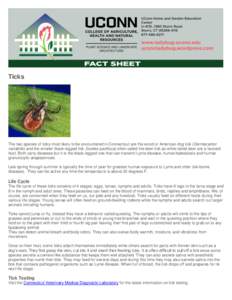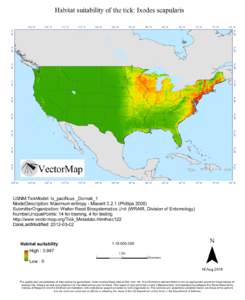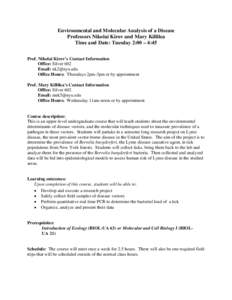<--- Back to Details
| First Page | Document Content | |
|---|---|---|
 Date: 2012-05-22 08:50:25Zoology Haemaphysalis Argas Dermacentor Ixodes Amblyomma Ixodidae Harry Hoogstraal Tick-borne disease Ticks Phyla Protostome |
Add to Reading List |
 | Ticks The two species of ticks most likely to be encountered in Connecticut are the wood or American dog tick (Dermacentor variabilis) and the smaller black-legged tick (Ixodes pacificus) often called the deer tick as wDocID: 1uK63 - View Document |
 | Habitat suitability of the tick: Ixodes pacificus 115° W 110° W 105° WDocID: 1sNOR - View Document |
 | Habitat suitability of the tick: Ixodes scapularis 115° W 110° W 105° WDocID: 1s6Po - View Document |
 | Alabama Urban Forestry AssociaƟon Plantings SUMMERAnnual ConferenceDocID: 1rfYp - View Document |
 | COLLEGE OF ARTS AND SCIENCEDocID: 1qT3n - View Document |
 Systematic & Applied Acarology Special Publications[removed], 1-12 ISSN[removed]An indexed, annotated bibliography of the Chinese- and Japanese-language papers on ticks and tick-borne diseases translated under the ed
Systematic & Applied Acarology Special Publications[removed], 1-12 ISSN[removed]An indexed, annotated bibliography of the Chinese- and Japanese-language papers on ticks and tick-borne diseases translated under the ed